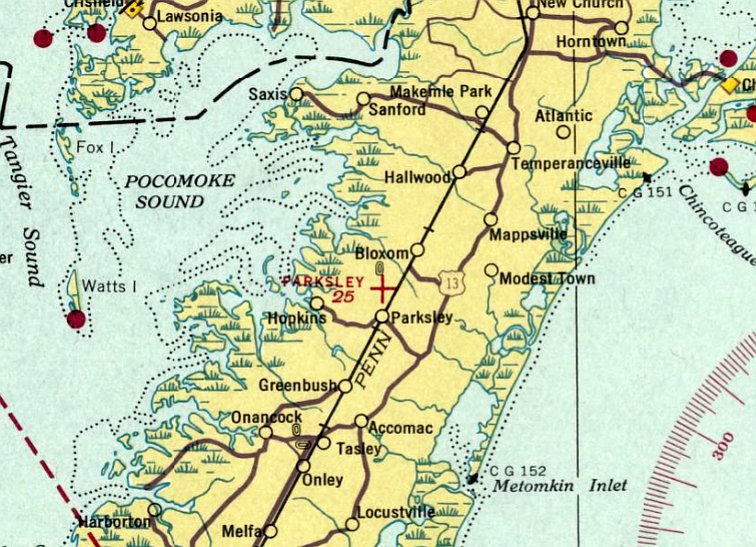
Abandoned & Little-Known Airfields:
Virginia: Delmarva area
© 2002, © 2024 by Paul Freeman. Revised 7/28/24.
This site covers airfields in all 50 states: Click here for the site's main menu.
____________________________________________________
Please consider a financial contribution to support the continued growth & operation of this site.
Cape Charles Air Force Station Airfield (revised 9/18/16) - Parksley Airport (revised 7/28/24)
____________________________________________________
Parksley Airport, Parksley, VA
37.789, -75.665 (Northeast of Hampton, VA)

Parksley Airport, as depicted on the May 1936 Norfolk Sectional Chart.
Parksley Airport was not yet depicted on the October 1935 Norfolk Sectional Chart.
The earliest depiction which has been located of Parksley Airport was on the May 1936 Norfolk Sectional Chart.
Note that it depicted Parksley Airport to the north of the town, in contrast to later aeronautical chart depictions.
This may have been due to the imprecision of early aeronautical charts, or possibly depicting a different early location of the airfield.
According to an article entitled “Event will honor WWII Civil Air Patrol base in Parksley” by Carol Vaughn in the 3/7/16 Delmarvanow,
“Seventy five men & women served at Civil Air Patrol Coastal Base 4, the Civil Air Patrol's only coastal base in Virginia during World War II.
It was one of 21 Civil Air Patrol stations on the Atlantic & Gulf coasts.
The base began a year after the founding of the Virginia Wing of the Civil Air Patrol, the official civilian auxiliary of the U.S. Air Force.
It was the 4th CAP base established in the nation & operated between May 1942 - August 1943. At its peak, 25 aircraft were housed there.
The first flight out of the base, which was located on Airport Road just west of Parksley, came on 5/17/42,
when Isaac Burnham, a 34-year-old investment broker from NY who became a major in the Civil Air Patrol, began flying patrols along with several other pilots.”
The article continued, “Pilots who came to Parksley from as far away as TX, NY, and FL flew patrols from dawn to dusk along the VA coastline,
looking for German submarines & escorting merchant ships traveling along the coast.”
They used their own aircraft & their own tools & set up the base at their own expense, according to Lt. Col. Patrick Fulgham, Vice Commander of the CAP VA Wing.
"They were called the Ducks," Parksley Mayor James Eichelberger said.
When they arrived in Parksley, they found the airport had reverted to being a farm field, meaning they spent the first month creating runways,
converting the farmhouse into an operations center, building a hangar & converting a chicken house into another hangar & barracks.

Parksley Airport, as depicted on the 1942 USGS topo map.

A circa 4/30/42-8/1/43 photo of Parksley Airport (courtesy of Patrick Fulgham), presumably showing construction of the Civil Air Patrol facilities.
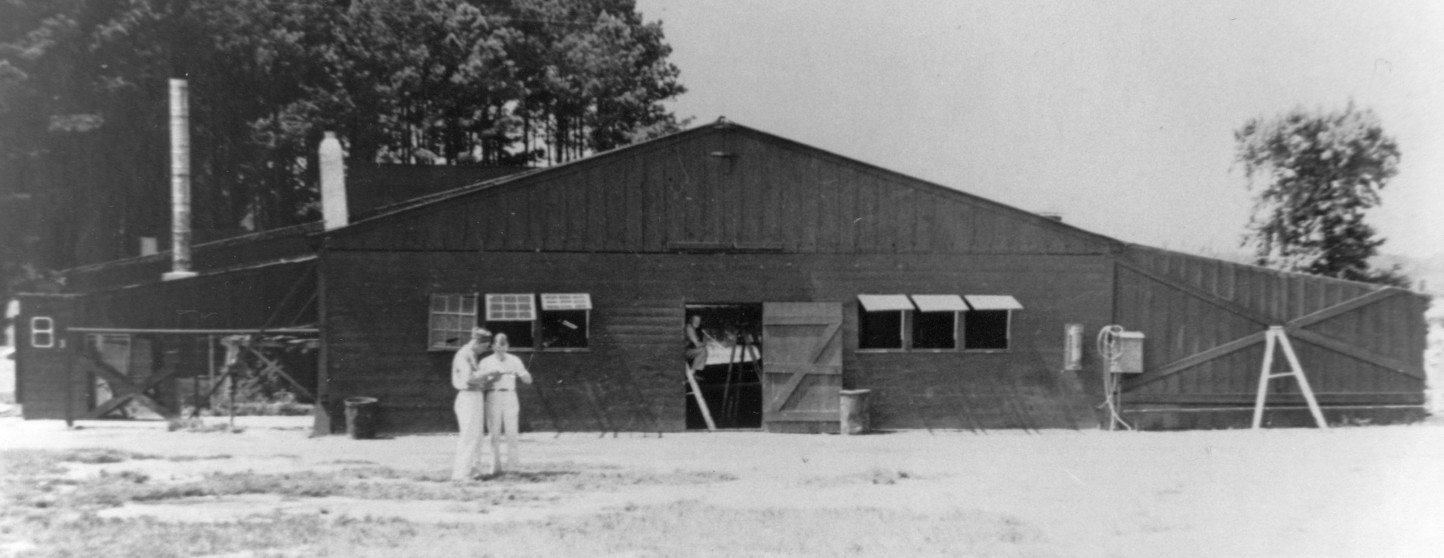
A circa 4/30/42-8/1/43 photo of Civil Air Patrol facilities at Parksley Airport (courtesy of Patrick Fulgham).
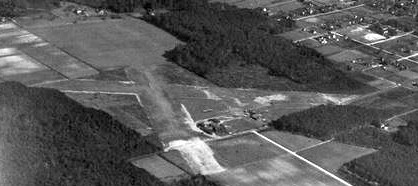
A circa 4/30/42-8/1/43 aerial view looking northeast at Parksley Airport (courtesy of Patrick Fulgham)
showed the field to have 2 unpaved runways in an X-shape, with a few small buildings on the southwest side.

A circa 4/30/42-8/1/43 photo of Civil Air Patrol members at Parksley Airport (courtesy of Patrick Fulgham)
in front of N18457 (a Stinson SR-9C Gull Wing serial #5358) & N16117 (a Stinson SR-9B Gull Wing serial# 9679).

A circa 4/30/42-8/1/43 photo (courtesy of Patrick Fulgham) of Civil Air Patrol planes at Parksley Airport: a cabin Waco, a Fairchild F-24, a Cessna Airmaster, and a Ryan SCW.
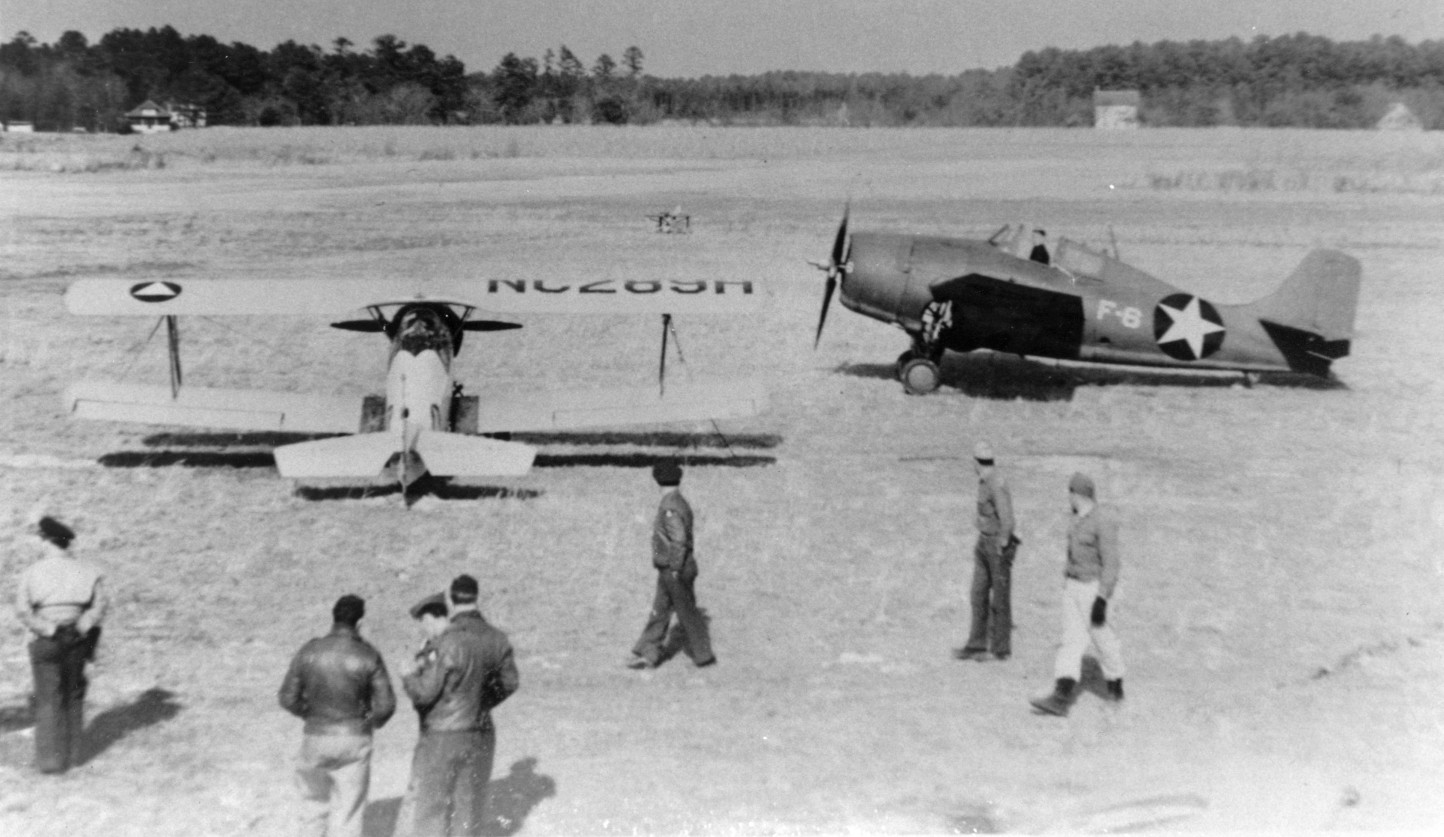
A circa 4/30/42-8/1/43 photo of a Civil Air Patrol biplanes & a visiting Navy Grumman F4F Wildcat fighter at Parksley Airport (courtesy of Patrick Fulgham).
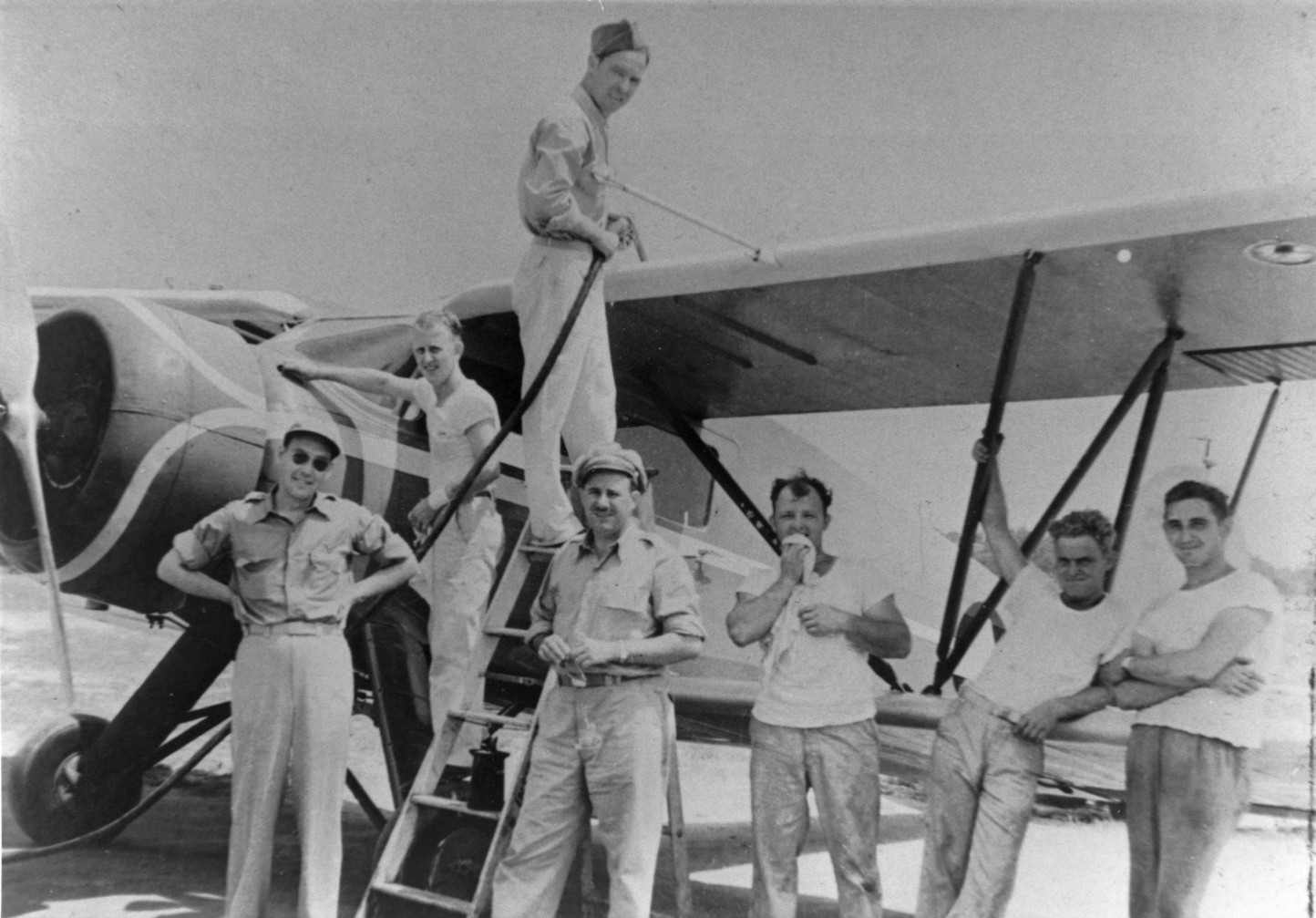
A circa 4/30/42-8/1/43 photo of Civil Air Patrol members refueling a biplane (model unidentified) at Parksley Airport (courtesy of Patrick Fulgham).

The March 1943 Norfolk Sectional Chart depicted Parksley as a commercial/municipal airport.
Note that it depicted Parksley Airport to the west of the town, in contrast to previous aeronautical chart depictions.
The Parksley CAP unit received a letter of commendation in August 1943 from Admiral H. F. Leary, Commandant of the 5th Naval District Naval Operating Base in Norfolk,
noting the pilots based in Parksley had flown a monthly average of 602 hours.
The base "has played an important role in the protection of coastal shipping between the Delaware & the Chesapeake," the letter said.

The last aeronautical chart depiction which has been located of Parksley Airport was on the September 1944 Norfolk Sectional Chart.
It depicted Parksley as an auxiliary airfield.
Parksley Airport was evidently not reused after WW2,
as it was no longer depicted on the 1945 Norfolk Sectional Chart or subsequent aeronautical charts.

A 12/10/59 USGS aerial view showed the site of Parksley Airport had reverted to farmland, with the X orientation of the former runways still barely recognizable.
The hangar & a few other small buildings remained on the south side.

The last topo map depiction which has been located of Parksley Airport was on the 1966 USGS topo map.
A 1967 aerial view showed the site of Parksley Airport had reverted to farmland,
but the hangar &
a few other small buildings remained on the south side.
A 1994 aerial view showed the hangar had been removed, and replaced by a smaller structure on the same site.
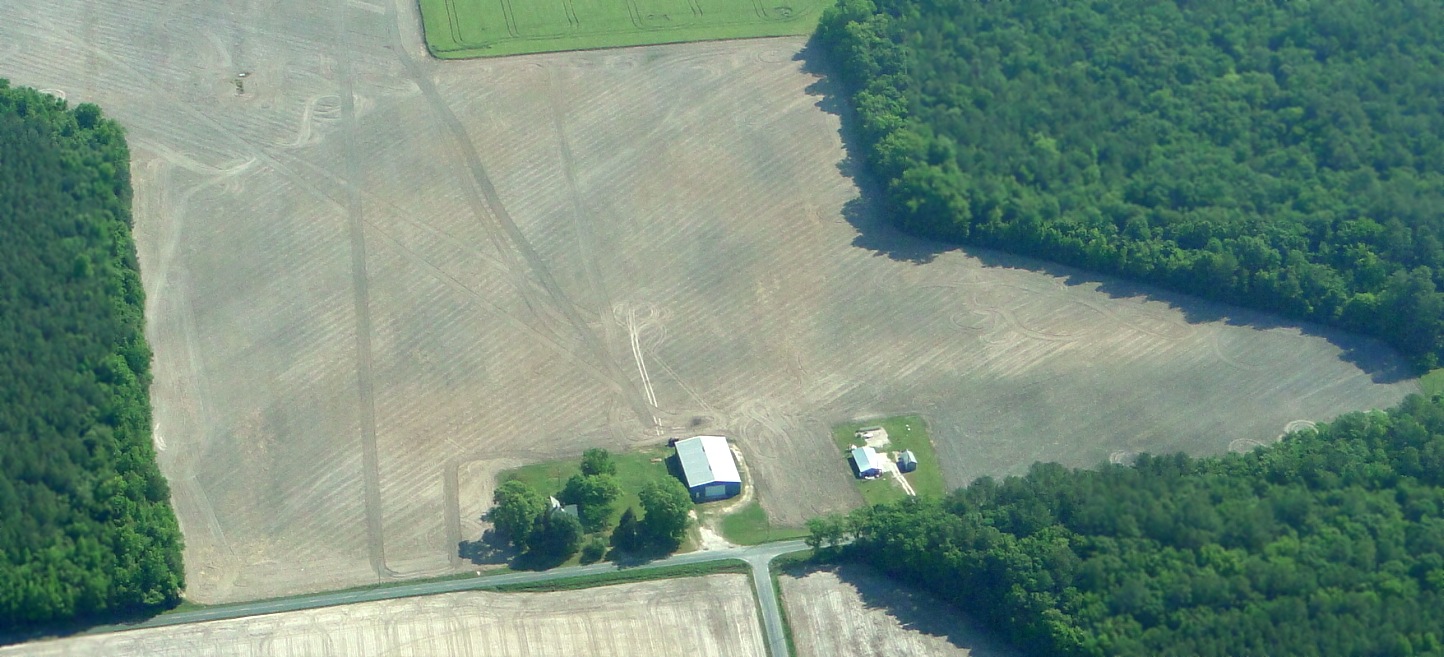
A 6/3/14 aerial view looking northeast (courtesy of Patrick Fulgham) showed the site of Parksley Airport remains as farmland.
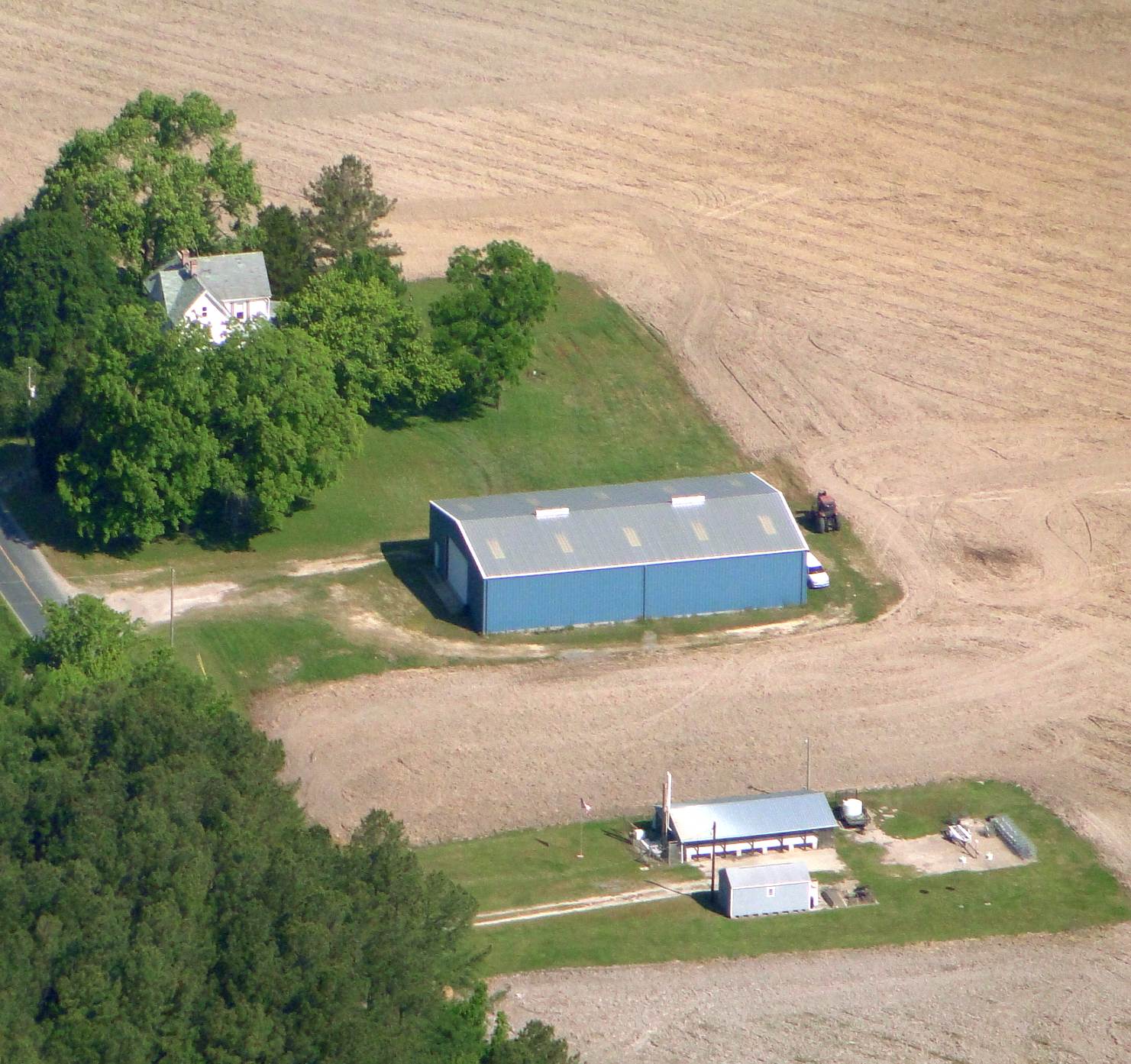
A 6/3/14 aerial view looking north (courtesy of Patrick Fulgham) of the buildings which remain on the west side of the Parksley Airport site.

A 2016 photo (courtesy of Patrick Fulgham) of the new historical marker commemorating the the Parksley Airport CAP base.
According to an article entitled “Event will honor WWII Civil Air Patrol base in Parksley” by Carol Vaughn in the 3/7/16 Delmarvanow,
“An historic marker celebrating a World War II-era Civil Air Patrol base in Parksley will be unveiled 3/12 at a ceremony in the town square.
The marker being installed near the corner of Bennett Street & Dunne Avenue honors the 75 men & women who served at Coastal Base 4.
A flyover including vintage aircraft is planned as part of Saturday's celebration, weather permitting, Eichelberger said.
Family members of several CAP members who served at the base are expected to attend the ceremony
and will receive bronze replicas of the single Congressional Gold Medal President Obama authorized in 2014 to honor all members of the CAP who served during WW2, according to Fulgham.”
The site of Parksley Airport is located north of the intersection of Hart Road & Airport Road, appropriately enough.
Thanks to Tekang Wang for pointing out this airfield.
____________________________________________________
Cape Charles Air Force Station Airfield, Kiptopeke, VA
37.132, -75.957 (Northeast of Hampton, VA)
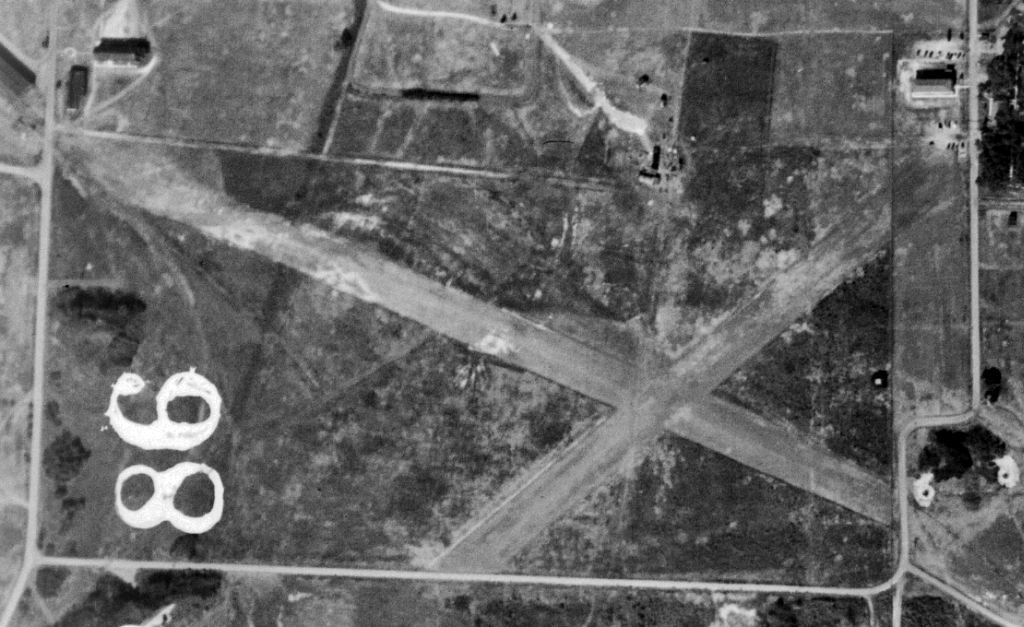
Cape Charles Air Force Station Airfield, as depicted on a 11/15/52 USGS aerial view.
Located on the very southern tip of the Delmarva Peninsula, this site was originally the location of Fort Winslow,
built in 1941 as a coastal defense artillery installation to compliment Fort Story in Virginia Beach
in order to protect the vast entrance of the Chesapeake Bay against enemy vessels.
It was renamed Fort John Custis in 1942.
Over the WW2 period, the fort eventually was armed with two massive 16" guns, four 8" guns, and four 155mm guns.
Fort John Custis was depicted on the 1943 USGS topo map, but no airfield was yet depicted at the site.
Fort John Custis was closed by the Army in 1948.
In 1949 the property was reused by the Air Force to establish Cape Charles Air Force Station, an air defense radar installation.
A small airfield was built at the site, presumably for logistical support flights.
The Cape Charles Airfield was not depicted at all on the January 1950 Norfolk Sectional Chart (or subsequent aeronautical charts).
The earliest depiction which has been located of the Cape Charles Airfield was a 11/15/52 USGS aerial photo,
which depicted 2 grass runways in an X-shape.
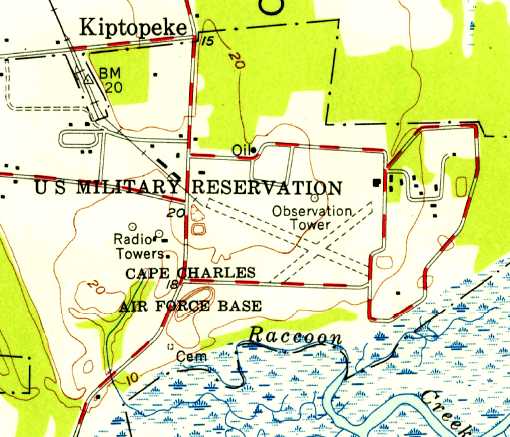
The 1955 USGS topo map depicted “Cape Charles Air Force Base” as having 2 unpaved runways in an X-shape.

A circa 1958-59 aerial photo of Cape Charles AFS, showing the two grass runways at the top-right,
from the 1960 Washington Air Defense Sector yearbook (courtesy of Thomas Page).
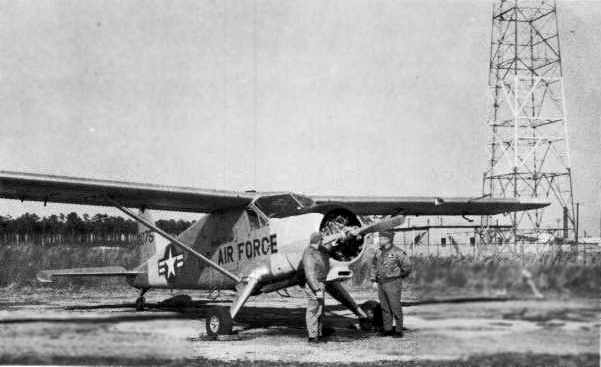
A circa 1958-59 photo of an Air Force DeHavilland U-1 Beaver at Cape Charles AFS,
from the 1960 Washington Air Defense Sector yearbook (courtesy of Thomas Page).
A 1967 aerial view showed the 2 grass runways remained intact, but were noticeably less distinct than in previous photos.
Cape Charles AFS was deactivated in 1981, and became the property of the US Fish & Wildlife Service in 1984.
The area is now the Eastern Shore of Virginia National Wildlife Refuge.
Two intersecting grass runways were still depicted at Cape Charles on recent USGS topo maps.

Only a single 2,600' grass runway was still depicted on the 1994 USGS aerial view of Cape Charles AFS.
A 1998 photo by Phil Payette of the former Cape Charles AFS airfield.
Prior to this it was the site of 8-inch railway guns (1942-44).
A 2000 photo of the Group Station Observation Tower, also known as the Kiptopeake Tower.
The tower was built of reinforced concrete in 1942, and is located by the airfield. It served different gun group commanders.
A 2003 aerial photo of the Cape Charles AFS airfield, looking west by Russ Roslewski.
One of the former runways was still recognizable, while the other was overgrown.
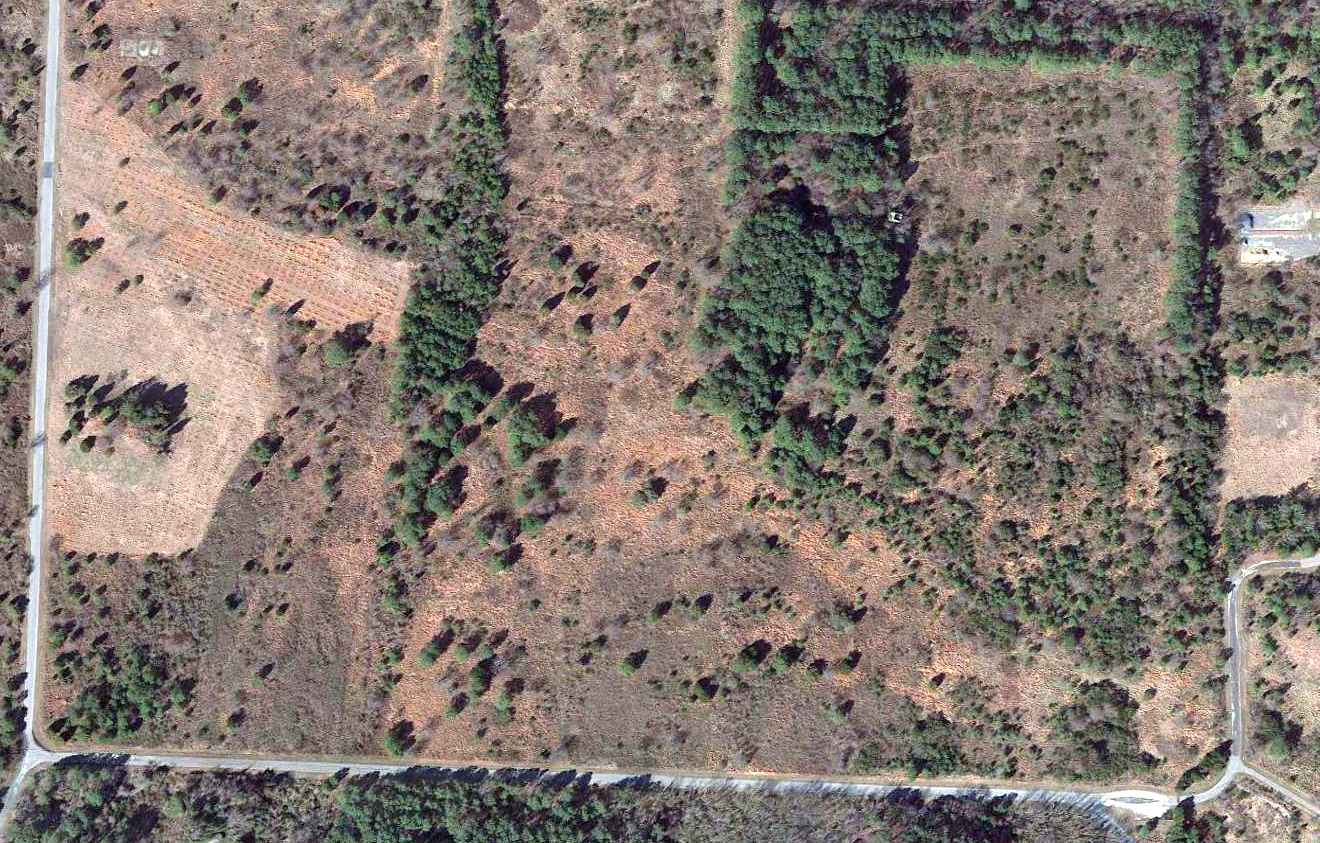
Only the faintest trace was still perceptible of the northwest/southeast grass runway in a 2013 aerial view of Cape Charles AFS.
Thanks to Bill Facenda for information about Cape Charles.
____________________________________________________
Or if you prefer to contact me directly concerning a contribution (for a mailing address to send a check),
please contact me at: paulandterryfreeman@gmail.com
If you enjoy this web site, please support it with a financial contribution.
Or if you prefer to contact me directly concerning a contribution (for a mailing address to send a check),
please contact me at: paulandterryfreeman@gmail.com
If you enjoy this web site, please support it with a financial contribution.
____________________________________________________
This site covers airfields in all 50 states.